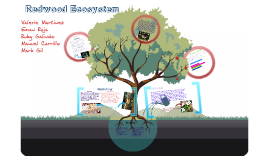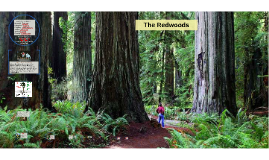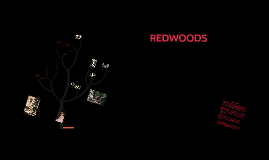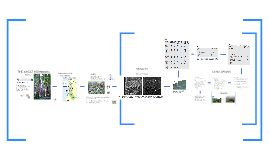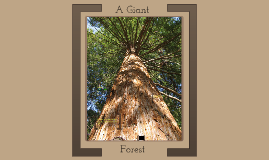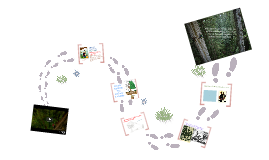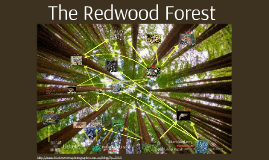Redwoods
Transcript: Green, John. Birds of Prey Coloring Book. New York: Dover Publications, Inc., 1989. Stokes, Donald & Lillian. A Guide to Bird Behavior, Vol. III. Boston: Little, Brown and Company, 1989. Terres, John K. The Audubon Society Encyclopedia of North American Birds. New York: Random House, 1996. An amoeba catching its prey SIMILARITIES These are two examples of the damage blight fungus can cause to trees http://www.ryenats.org.uk/detail1.htm http://www.dalswildlifesite.com/thecuckooflowermilkmaid.htm Amoeba The differences between us is that thermophiles reproduce sexually and asexually unlike us where we reproduce sexually. Another difference is that they get there energy from hydrogen and humans get it from oxygen. The last difference is that we change in structure and thermophiles don't change. Northern Spotted Owls Owls are just one of the few animals that live in the California Redwoods. If you examine them, you will come to realize that they are similar to humans. Like humans, these owls have eukaryotic cells, meaning they are multicellular. Speaking of cells, they have animal cells like we do. In comparison to humans, owls reproduce sexually and not asexually. Owls are mammals like us. Like owls, we are capable of eating meat. Owls also have an audible range similar to humans. These are only a few similarities between humans and owls. Unlike humans, these owls lay eggs and hatch them, which is different from our reproduction process. Owls are carnivorous, and unlike them, we are omnivores. Ever heard of building your own home? Yes? Well, owls don't do that. They find natural nests, but we don't go around finding natural houses. In contrast to our eye sights, owls can only see straight forward, which is why they have flexible necks that bend all the way back. We, unlike these creatures, cannot see perfectly in the dark. These special birds hardly come out in the day when it is time for humans to roam around. Lastly, we are not the hunting type of mammal anymore like owls are. Owls and humans can be compared and contrasted without difficulty. <http://library.thinkquest.org/oro212089/therm.htm Bacteria This is an example of a milkmaid that bloomed February in February. DIFFERENCES Wearing, Judy. Fungi New York: Crabtree Publishing Company. Dawe, Angus. Research: Fungal Molecular Biology and Genetics. <http://biology-web.nmsu.edu/dawe/Site/Research.html> http://www.zephyrus.co.uk/protistkingdom Redwood Ecosystem Humans and blight fungus are also different in some ways. A contrasting feature between humans and blight fungus is that blight fungus can reproduce BOTH sexually and asexually. Unlike blight fungus, we as humans can get a cure when we get sick, but blight fungus gets weak and dies. The last difference is that humans and blight fungus are multicellular, however, blight fungus is a very deadly desies to trees and plants. Milkmaids Blight fungus and humans are similar in many ways. A comparison between blight fungus and humans is that both are heterotrophs, which means we can't make our own food. Like blight fungus, we are multicellular. The last similarity is that both blight fungus and humans are eukaryotes which means that our cells have a nucleus. Eman Raja Works Cited Amoeba are some of the organisms living in the Redwoods. They live in either ponds, ditches, or slow moving streams. Amoeba, unlike humans, are unicellular. This cell contain a nucleus along with a cell membrane, food vacuole, cytoplasm, pseudo podium, and a contractile vocuole. When amoeba spot prey, usually other protists, they use their pseudo podium to make a barrier around the prey's body. Amoeba also eat desmids, or microscopic plants. They surround the plant and start respiring, or breathing, oxygen off the plant. When an amoeba is in this proccess, carbon dioxide seeps from its body. Another interesting thing is that an amoeba can barely can be seen by the naked eye. Valerie Martinez Eman Raja Ruby Galindo Manuel Carrillo Mark Gil Manuel Carrillo Blight Fungi In comparison both humans and thermophiles are eukaryotes because we both have a nucleus in our cells. We both get most of all of our energy from oxygen. The last thing we have in common is that we both have Co2 in our bodies. Similarities Milkmaids are some of the flowers that grow in the Redwood forest. They bloom till January-May. Milkmaids also are some of the first spring flowers. Flowers respond in different ways. They get their energy from photosynthesis. Both humans and Milkmaids reproduce sexually. Also like Milkmaids we both are multicellular. Milkmaids grow with water and sun. We humans grow little by little. In the same way, Milkmaids grow little by little from a seed to a flower. Milkmaids and humans are different because milkmaids are plant cells. Finally, milkmaids are found in moist areas. Differences






